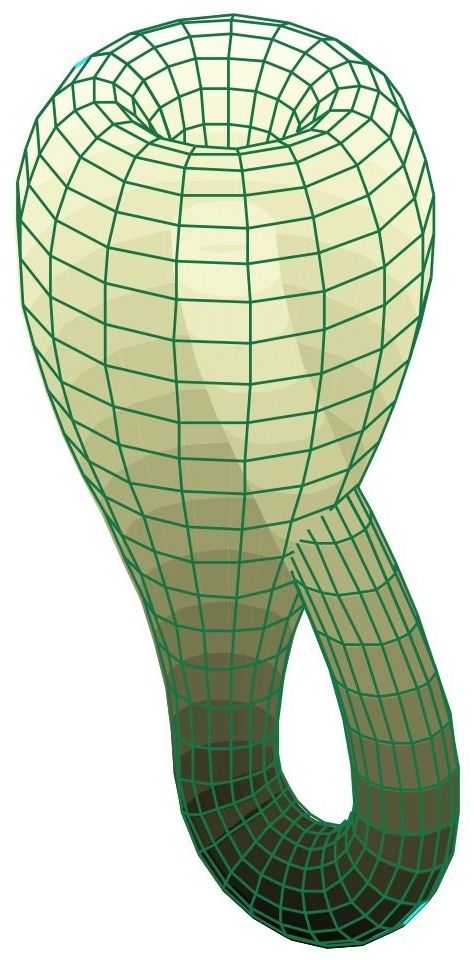On April 25, 1849, German mathematician and mathematics educator Felix Klein was born. Klein is known for his work in group theory, complex analysis, non-Euclidean geometry, and on the connections between geometry and group theory. His 1872 Erlangen Program, classifying geometries by their underlying symmetry groups, was a hugely influential synthesis of much of the mathematics of the day. Klein also devised the Klein-bottle, a one-sided surface which, if traveled upon, could be followed back to the point of origin while flipping the traveler upside down.
A mathematician named Klein Thought the Möbius band was divine. Said he: “If you glue The edges of two, You’ll get a weird bottle like mine.” ( Leo Moser )
Felix Klein’s father was an old Prussian Protestant from Ennepetal in southern Westphalia. He was district administrator of the government’s main fund in Düsseldorf, while Klein’s mother came from industrial circles in Aachen. In the autumn of 1865 Felix Klein began studying mathematics and natural sciences at the University of Bonn. Klein studied in Bonn with Rudolf Lipschitz and Julius Plücker, whose assistant he became. After Plucker’s death Alfred Clebsch took over the publication of his unfinished work and transferred this work to the talented Klein received his doctorate in 1868 from Plücker with a topic from geometry applied to mechanics. In 1869 he went to Berlin University and listened to a lecture by Leopold Kronecker on square forms.[5] He took part in the mathematical seminars of Ernst Eduard Kummer and Karl Weierstrass, where he also met Sophus Lie, with whom he went to Paris for a study visit in 1870 and was a friend.
